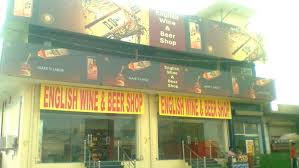Liquor shops will open in green zones in the state. Also, buses will run with only 50 percent passenger. Cars can carry a maximum of three people including the driver. Of the total cases in the country, 28046 are active, 10632 people have recovered, and 1301 people have succumbed to the disease.
Liquor shops in Uttar Pradesh will finally open from Monday as Lock down 3.0 kicks in from tomorrow.
As per new Ministry of Home Affairs guidelines, standalone liquor shops will be allowed to open in some areas from May 4 in light of relaxations given in the new phase of the lock down. Sale of liquor will be allowed with certain conditions in all zones, barring containment areas, in standalone shops, not in markets or malls.
UP excise department authorities have announced that standalone liquor shops will be allowed to open in all areas in the state except containment zones in red zones.
The liquor shops will remain open from 10 am to 7 pm.
Authorities also clarified that alcohol sale will not be permitted at hotels and restaurants.
However, all necessary measures will be taken to ensure social distancing is followed. Only five people will be allowed to buy liquor from a shop at one time.
The third phase of the countrywide lock down begins Monday with “considerable relaxations”, but curbs will continue in containment areas so that the gains achieved so far in the fight against COVID-19 are not “squandered away”, officials said Sunday.
The country has been divided into three zones — Red, Orange and Green – based on corona virus risk-profiling. The extended lock down is slated to last till May 17.
Uttar Pradesh currently has 19 Red Zone districts, 36 Orange Zone districts and 20 Green Zone districts.
This means that people in cities like Agra, Lucknow, Saharanpur, Kanpur, Moradabad, Noida, Greater Noida and Meerut, which all fall under red zone districts, will be able to buy alcohol from tomorrow if they live in non-containment zones.




